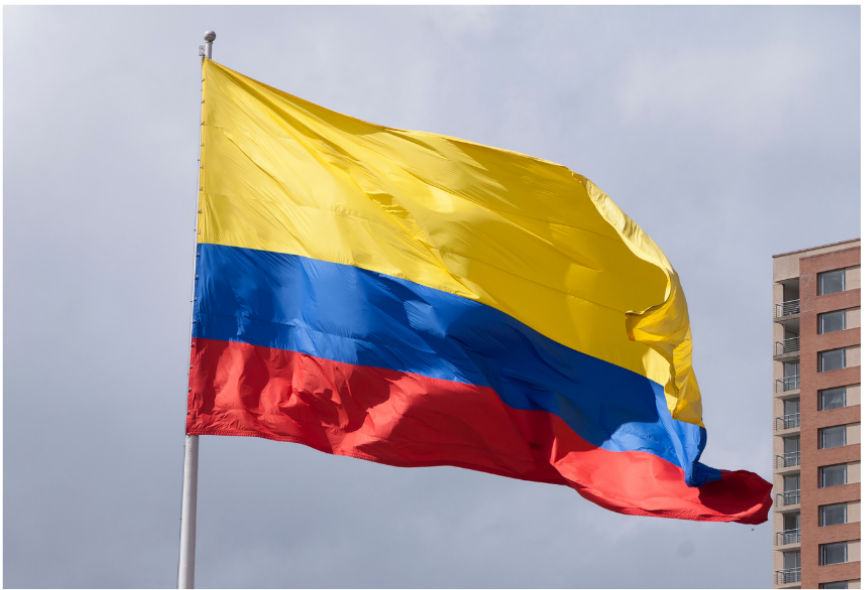Climate change is a real and tangible fact. It is the main cause of the continuous social, environmental and structural affectation of cities, and its impact has caused a deterioration in local, regional, national and international markets. These impacts can be intervened with tools to leverage positive climate actions, which aim to structurally decarbonize systems, industries and products.
Colombian Carbon Tax – law No. 1819
Colombia is a diverse, multiethnic and multicultural country, which is not exempt from the problems resulting from climate change. However, thanks to its legislative actions, it is possible to encourage compliance with greenhouse gas (GHG) mitigation goals at the national level. This is the case of Law 1819 of 2016 (Structural Tax Reform), which creates the carbon tax within an economic mechanism to achieve mitigation goals.
Article 221 of Law 1819 of 2016 (Structural Tax Reform) creates the national carbon tax, through which the Colombian government, in the interest of discouraging the use of fossil fuels and following the commitments made under the Paris Agreement, imposes the payment of a fee related to the carbon content that is released in the form of greenhouse gas (GHG) into the atmosphere when fuels (gasoline, kerosene, jet fuel, diesel and fuel oil) are combusted. Other examples are natural gas -also taxed, but only for use in the hydrocarbon refining and petrochemical industry- and liquefied petroleum gas (LPG) only for sale to industrial users.
This tax is levied at any of these three moments associated with the distribution chain of fossil fuels:
- When it is sold in the national territory.
- When the producer of the fuel withdraws it for its own consumption.
- When the fuel is imported.
These actions are considered as a tax generating event. The tax is caused only once regarding the generating event that occurs first -a sale, withdrawal or importation, for example- leading to the causation of the tax (i.e., to its collection).
The funds corresponding to the collection of this tax are destined to the financing of environmental and sustainability projects.
In order to have a reference on the magnitude of the coverage of this tax, it is important to mention that the emissions due to these fuels represent about 27% of the total emissions of the country, that is, about 51 million tons of CO2 equivalent.
Non-causation mechanism
The system with which the carbon tax is developed in Colombia counts in turn with what we call the non-causation mechanism, which allows to avoid paying the tax by purchasing eligible carbon credits.
In order to make effective the non-causation of the national carbon tax, the subject responsible for the payment of this tax must neutralize the GHG emissions associated with the fuel used for its productive activity. This is achieved by canceling or transferring the tons of CO2 reduced or removed in favor of the producer or importer of the fossil fuels acquired.
The eligible carbon credits need to have a 5 year vintage, they have to be generated in Colombia only and come from one of the approved standards (CDM, VCS, CERCARBONO, ProClima or CSA).
The rules governing its operation are described and annexed in Decree 926 (published in 2017) and the entity responsible for collecting the tax is the National Tax and Customs Directorate of Colombia (DIAN).
In addition, through Resolution 1447 (2018) issued by the Ministry of Environment and Sustainable Development (MADS), the monitoring, reporting and verification system of national mitigation actions and particularly the National Registry of Greenhouse Gas Emissions Reduction (RENARE) is regulated.
These two aforementioned norms are of great importance, since the reduction and capture of GHG will depend on the effectiveness of the implementation and application of procedures and instruments created by them, clearly justifying the fiscal cost for the non-causation.
It is important to keep in mind that the benefits of the exclusion for not charging the carbon tax are only obtained with the certification of eligible credits for such taxation, and not with the carbon footprint. With the voluntary compensation mechanism the companies are also helping mitigate climate change and contributing to the country’s NDCs (Nationally Determined Contributions).

Companies obliged to pay the carbon tax
All users of taxed fuels pay the carbon tax within the fuel distribution chain as an additional value within the sale price of the hydrocarbon, and the wholesale distributor of the fuel pays this tax to the producer or importer, who acts as the tax collector to finally transfer it to the National Tax and Customs Directorate (DIAN).
Some sectors or companies that pay this tax, because their operations require the use and combustion of these fuels, are:
- Passenger transportation companies
- Cargo transportation companies
- Hydrocarbon refining industry
- Petrochemical industry
- Industries of the food, textile, mining, or other sectors; that within their productive processes use machinery whose operation depends on some type of taxed fuel.
Colombia and its NDCs
In this regard, as stated in the Territorios Sostenibles website, Colombia has just made an adjustment in its Nationally Determined Contributions (NDCs): it raised the targets for the reduction of greenhouse gasses (GHG), which cause global warming, from 20% to 51%. We must remember that carbon dioxide is one of the elements with the greatest impact on the increase in global temperature, although not the only one.
Franciso Ocampo, Executive Director of ASOCARBONO, emphatically states in the text of La República that, in addition to the tax, there are carbon credits or certificates, which are paid by consumer companies with a view to being invested in projects aimed at environmental compensation in communities. This is a market that mobilizes up to $630,000 million per year, of which about 65% belongs to the tax collection and 35% to the resources for non-taxation (carbon credit sale).
In Colombia, the price per ton is around US$5 (today at $18,829 COP). This is still low if we are looking for a radical transformation in energy use. Likewise, it should be noted that the trend between tax collection and non-taxation transactions has been closing: by 2022, the relationship between tax collection and volume will be close to 50% of the total.
Colombia is definitely on the right track and is a pioneer in Latin America. Still, more work needs to be done and Colombia is doing it by analyzing the deployment of an ETS.
At ALLCOT Trading we are active in the Colombian Market and always looking to promote positive change. If you want to achieve this in a fair, transparent and win-win scenario, contact us and together we will make it happen.



